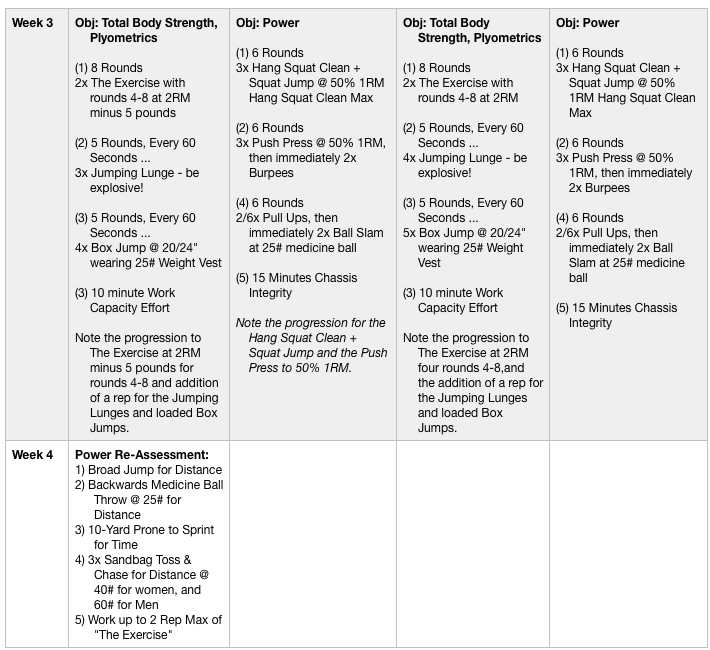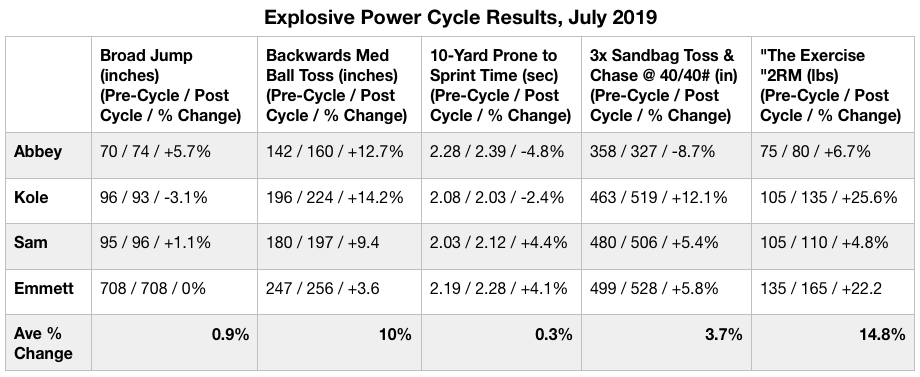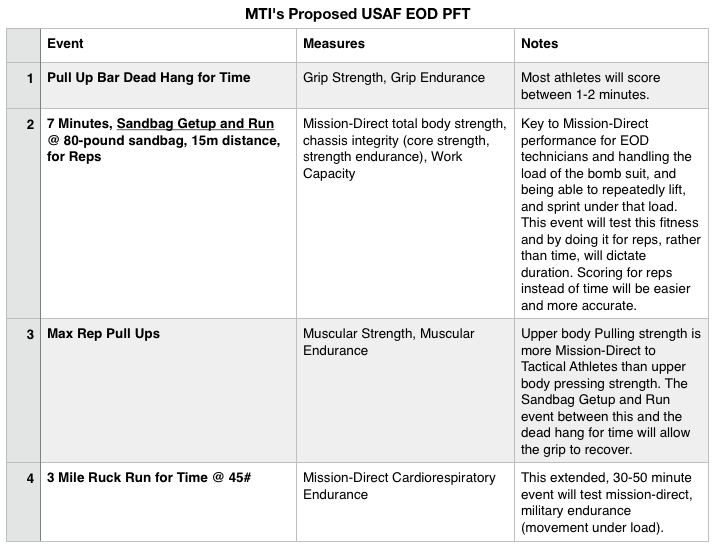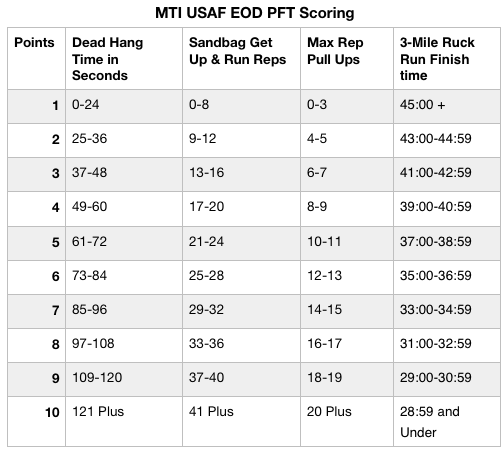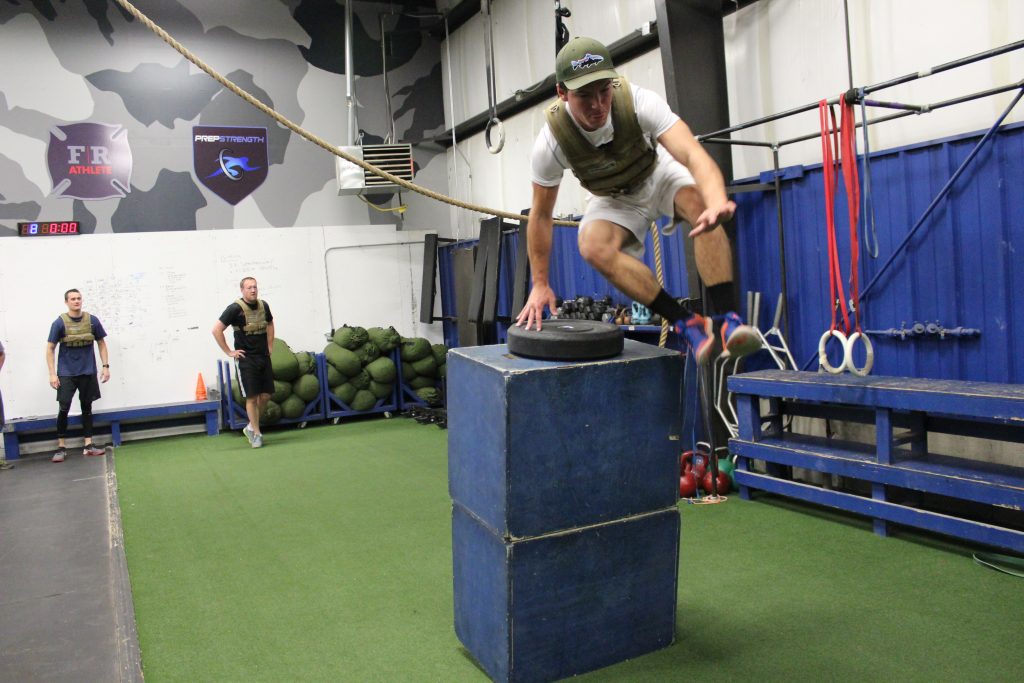QUESTION
I’ve been doing the Peak Bagger plan and I’m enjoying it! I signed up for the subscription so I can explore your other programs and I have a couple of questions. What do you think your best program is for a 41 year old weekend warrior who wants to stay in relatively good shape year round? I live in Colorado and I want to be able to go from spring/summer/fall backpacking and peak bagging (with occasional outdoor rock climbing, but it’s not my main focus) to frontside resort skiing (occasional backcountry stuff) and feel solid doing all of it? I’m looking at your mountain base programs and I’m also intrigued by the SF45 programs, but I’m open to others if you think those are bad fit. I’m currently pretty strong but my endurance, especially uphill when I get above 10,000 feet, is my weakness. What program or combination of programs do you recommend for this?
ANSWER
I don’t have one program that keeps you prepared for anything … our programming doesn’t work that way.
The closer to your sport season or event, the more “sport specific” you want your programming to be.
The further away from the season, the more “general” your programming can be.
We call this “general” programming “Base Fitness” … and for us it’s not general fitness. Our base fitness programming trains the broad fitness attributes of the type of athlete. So our Mountain Base programming, found in the
Greek Heroine Series (Helen, etc.), concurrently trains strength, work capacity, mountain endurance (running, uphill movement), climbing fitness (rock) and chassis integrity. Our military programming found in the
Greek Hero series (Hector, etc.) trains strength, work capacity, military endurance (run, ruck), tactical agility and chassis integrity.
Choose the type of athlete you are and follow the appropriate Base programming …. then, directly before your next sport season, drop out of the Base fitness programming and complete the appropriate sport-specific training plan. For example, directly before ski season, drop out of base fitness, and do the
Dryland SKi Training Plan, or the
Backcountry Ski Training Plan – which ever fits.
After completing the sport-specific train up, drop back into the Base Fitness programming.
Based on what you describe, you’re a mulit-sport mountain athlete and the Base fitness programming which fits best for you is the Greek Heroine Series. If you wanted to do something similar, but skip the climbing do the
Wilderness Packet for Wilderness Professionals — which includes strength, work capacity, endurance (run, uphill hike), and chassis integrity.
SF45? This is generally designed for athletes ages 45-55, but if your knees hurt when you walk down the stairs, you should probably do it as your Base Fitness programming.
– Rob
FOLLOW-UP QUESTION
Thanks for the explanation. My knees are good, so SF45 isn’t a good fit. I recently discovered your extensive Q and A library so apologies for the somewhat redundant question. You must have incredible patience and tolerance answering essentially the same question over and over again! One final one (for now) on my end. I really don’t like running. I’ve tried to get into off and on over the years but it just never took. Could be because it’s hard but maybe something else. What is a good substitute for running in the Mountain Base, Wilderness Professionals, etc? Would an uphill hike with weight do the job?
Thanks again for all you do!
The mountains you move with your feet and any cardio mode which you sub for running …. biking, swimming, rowing, ect. will have limited transfer. The Mountain Base programming already includes uphill hiking with load, so you could double that up if you wanted.
Better would be to follow the programming as prescribed and run.
– Rob
QUESTION
I’m looking for a program like the pre deployment ones but I love to lift so I wouldn’t want to cut out things like Squats, deadlift, clean,
ANSWER
– Rob
QUESTION
I’ll be finishing the bodyweight program in about a week. What’s next? I’m retired military with a SOF background and at one time was doing the daily operator sessions prior to a couple back to back Ortho surgeries (knee and shoulder) sided lined me a few years ago. I ride a desk now but would love to get back to the daily operator sessions. I need to take 20-25 lbs off my frame (I’m 6’, 242) but have limitations. Running is the biggest one. I’m using the military walk to run protocol for the bodyweight program and will continue to apply it towards future programs in the hopes of actually being able to run a few miles without stopping. Pull-ups have been substituted with chin-ups due to my shoulder. I have a basic garage gym with sand bags and a rower and it should complement any of the MTI/MILATH programs. I know my diet is shit and I’m working that piece. Your help is very much appreciated.
ANSWER
I’d recommend you move into our
Country Singer packet of plans, beginning with the first plan in the packet,
Johnny. These include strength (most the plans are freeweight), chassis integrity, work capacity and endurance (running).
Johnny includes barbell work.
I’d recommend you continue to walk/jog the running in the plan as needed.
And … fix your diet. Clean it up and you’ll shed weight.
– Rob
QUESTION
What do you recommend for those who are law enforcement or fire and rescue in their civilian careers and reservists in their military careers?
ANSWER
Train for your full time job.
– Rob
QUESTION
I just started the LE Onramp training program and had a few questions.
I’m 5’10, 205LB, and sadly to say my health has gotten away from me the last couple years. I’m in Federal LE and the majority of my time is spent at the desk or doing stationary surveillance.
My goals are general health, weight loss, and wanna be in top shape for an Arizona muley deer hunt I have coming up in November.
I “completed” the first workout from the Onramp, but I had to scale it back. I did 5 rounds instead of 10 for the two training rounds and was barely able to complete it. Should I keep scaling back the workouts? Or would you recommend a different beginner workout?
ANSWER
Continue with the OnRamp plan and do your best. Stick with it.
– Rob
QUESTION
I’m competing in a duathlon in 6 weeks. My run needs the most work so I’m starting the Run Improvement plan at week 6 today. How would you/should I incorporate cycling?
ANSWER
Below is what I’d recommend based on the Running Improvement Training Schedule
Day AM PM
Mon Run Intervals Bike Intervals: 2 Rounds of 1/3 the Race Distance, at Threshold Pace (fastest possible), 5-10 min rest between intervals
Tue Strength Moderate Paced Bike Ride – Race Distance. Moderate = Comfortable but not Easy
Wed Run Intervals Bike Intervals: 2 Rounds of 1/3 the Race Distance, at Threshold Pace (fastest possible), 5-10 min rest between intervals
Thu Strength Moderate Paced Bike Ride – Race Distance. Moderate = Comfortable but not Easy
Fri Easy Run Easy Bike Ride at 120% Race Distance. Easy = You can speak in full sentances
Sat Easy Run Follow the run immediately by an Easy Bike Ride at 120% Race Distance.
– Rob
QUESTION
Your site is greatly appreciated. I need some guidance on the right plan. I am 55 and would describe my fitness level as well above average, especially for my age. Although retired from full-time law enforcement at present, I have an Airborne-Ranger, law enforcement tactical/SWAT background and have focused on functional fitness for a couple of decades. In addition to the health benefits, my workout ethos has been based on the principle that “If a bad-guy gets me, it won’t be for lack of fighting back or because I was an out-of-shape pogue!” For the past several weeks, I have been using the MARSOC recommended pre-selection training plan with some modifications. The modifications are based on the premise that those using the pre-selection plan are in their 20’s and have two-plus hours a day to work out. I fit in neither category. Nonetheless, the workouts have been productive. But, it is time to move on since a MARSOC selection is not in my future.
What I am looking for is a 5 day a week, one hour’ish from start to finish routine (one or two days a week could stretch to an hour and a half) that focuses on total-body, functional fitness. This would include core strength, agility and balance, sprint-power, some 3-mile and under moderate paced running, some moderate weight rucking and an option for an occasional “wild-card” workout such as moderate lap swimming with pool-deck grinder events. An occasional “max-out” day before a rest day would be good, as well. I am particularly fond of pull-ups, dips, push-ups, and (supported) flutter-kicks. The ethos behind such a work out would be: “I may not be looking for a door to go through, but I want to be ready if I have to go through one.” BTW, I am a Reserve Deputy so the possibility of having to “step-up” is there.
Do you have any plans “on the shelf” that approximate the above? Or, are there two or three that have some components that could be combined?
ANSWER
Two suggestions for you: (1) A suggestion from our programming based on what you asked for; (2) A suggestion based on your age/job.
Suggestion (1):
Our
Pirate Packet of training plans is designed for Military and LE Units with water-based mission sets. These plans concurrently train strength, work capacity, endurance (run, ruck, swim), Chassis Integrity (core) and Tactical Agility. Start with
Barbossa. Most training sessions are designed to last 60 minutes.
Suggestion (2):
Our
SF45 Programming is designed for high impact mountain and tactical athletes ages 45-55. SF45 programming concurrently trains strength, work capacity, chassis integrity and endurance, but overall have an endurance emphasis. Start with
SF45 Alpha.
I’m 51, and do the SF45 programming mostly, unless I’m lab-ratting new programming.
– Rob
QUESTION
I finished my last pst assessment this week and wanted to pick your brain. I’ve attached a screenshot of my progress over the 3 weeks. As you said in the previous email, my numbers didn’t improve as drastically, but they did improve.
I wanted to do my official pst at the end of this program, week 7 if you will. My problem is that my run still isn’t where I need it to be; I need to break 10 minutes to be competitive. Anything I could do in the next two weeks differently that might get me over that hump? Maybe mile repeats instead of half mile?
I was also interested in your thoughts on peaking for the test. How many days rest should I take, and do you recommend that I do light activities leading up to it? Finally, if I dont hit my goal numbers, should I just rinse and repeat the program until I get there, or move on to something else?
Thank you for lending me some of your time, it really is appreciated
ANSWER
Running Hump?
You’ve had strong improvement with this programming, but “everything works, and nothing works forever” … so you need to change the programming. You could certainly try 1 mile repeats and see if that helps. Also – not sure how fat you are, but losing 5-10 pounds can make a huge difference in all these events. Also – make sure your running form is solid. Look at Chi Running or Pose Running for form.
Peaking?
In general, 2-3 days total rest is adequate. The issue is nerves …. so if you must do something, keep the intensity, but cut down the volume significantly.
Don’t Hit Numbers?
Definitely don’t repeat the plan. You have accommodated to this progression and need a break from it. I’d recommend Barbosa from the Pirates Packet to give yourself a mental and physical break from the PST programming, then re-peating the PST Plan.
– Rob
QUESTION
First, thank you for all your information every week. I look forward to the emails that are packed full of awesome stuff.
I read Rob’s two posts about travel fitness and sandbags and I have made a sandbag (approx 60#). I also have 2 KB (54# and 35#). I have a pull up bar and a few lower dumbbells and a jump rope, along with two huge tractor tires. I am a nursing student and former Marine infantryman and I would like to use these items to get functionally fitter. Is there an online coaching area where one can have workouts made with the gear they have available? If not, is there a specific plan you recommend? I would prefer to stay away from the gym due to loss of time driving that I would be doing more. I also don’t want to buy a generic plan on Amazon that just says to run and do pull ups and such. I loved the one program did I of yours a while back that took percents of your base and worked you forward. This seems much more intuitive for the individual as opposed to cookie cutter plans. Any guidance is greatly appreciated and I am a huge fan of your site.
ANSWER
I’m sorry – I don’t design individual training plans.
From what I do have, I’d recommend
Humility for your equipment inventory. It’s an intense, limited equipment training plan.
– Rob
QUESTION
First thank you all for all the info, and continuous output of programs/testings you do on yourselves for us. Quick questions for you,
1, I briefly remember there being an article regarding a program for K9 Officers, is that still in discussion?
2, I’m a 6yr patrol cop in LAPD. Regarding “what program to follow,” or maybe some insight. I’m currently following the big 3+running. I was wondering if it would be wrong to add a fun-run type of run on a run day or some type of continuous bodyweight day to a run extra some calis / body weight work capacity.
ANSWER
1. I had a handful of request for a K9 packet of plans, and developed a K9 Handler assessment – sent it to those who requested it to complete it and send me data – and never heard back … and moved on.
2. Best programming for you would be the plans/order in the
Spirits Packet for LE Patrol/Detectives. These plans concurrently train strength, work capacity, chassis integrity (core), tactical agility, upper body hypertrophy and limited endurance. We also have Daily Officer Sessions, which you can access with a subscription to the site.
For you now, the the Big 3 + Running Plan … you don’t need to add any running, but could add an intense, extended work capacity effort 1-2x/week. One of my favorites for Tactical Athletes is:
15 Minute AMRAP
Rest 30 Seconds
– Rob
QUESTION
I’m running the Army 10 Miler for the fifth time this October. Which plan should I use to train up and maintain strength? Thanks.
ANSWER
I don’t have a 10-mile training plan, but do have a
Half Marathon Training Plan – which is what I’d recommend. It includes strength work via our leg blaster complex, scotty bobs and chassis integrity work. The running progression in this plan is assessment-based and scaled – our most advanced endurance programming. This plan is best for your race performance.
The other option is our
Meathead Marathon Training Plan includes barbell-based, heavy strength work. The running progression is simply distance/volume based. You could do this plan, and cut the prescribed distances in half.
The Half Marathon Plan would work best if you want to race your best.
The Meathead Marathon Training Plan will work best to increase your raw strength, but won’t do as well for your race performance.
– Rob
QUESTION
What is the best plans to put on size and get ready for a powerlifting meet. I still have to be well conditioned for my PFT and CFT as well.
ANSWER
You’re asking for three different things:
– Powerlifting meet programming
– Hypertrophy programming
– PFT/CFT programming
No program exists to do all these together, and do them well. So, what I’d recommend is you drop the mass/hypertrhophy …. extra mass means nothing for a powerlifting meet – it doesn’t make you stronger, and extra mass will just slow you down for the running and work capacity parts of the PFT and CFT.
Focus on one thing at a time … Powerlifting first. We don’t have a powerlifting meet only specific program. What I do have is a
Big 3 + Running Program which trains strength for the Bench, Back Squat and Dead Lift, and also keeps your cardio/endurance for running. Start there.
– Rob
QUESTION
I’m 44, Im an LE working warrants doing high risk/SRT work. I’m trying to decide between Gun Maker packet and the SF45 packet. Im interested in the Gun maker for the conditioning, but SF45 because of the age and low impact workouts. Should I go with SF45? Or should I get the Gun Maker? I’d eventually like to go compete at the https://thetacticalgames.com/
ANSWER
Sounds like you’re still on the tip of the spear …
Gun Maker. – Rob
QUESTION
Trying to figure out where to (re)start. Made it through 4 weeks of dry land ski v4 before a ski trip end of December. Had a fall with a tibial plateau fracture and meniscus tear. I’m 5 weeks out from meniscus surgery and have fallen off the wagon in the 6 month interim. Hoping to be cleared in 3 weeks. Looking to get back into the fitness groove and lose the 10 pounds I’ve put on. Not sure if I should jump into leg injury or wait for clearance to start something else. What plan(s)?
ANSWER
Get back on the wagon ….
– Rob
QUESTION
Just going through your website and struggling to figure out which is the right plan for me! I just want a general plan with my primary goal being strength training. I’m not sure what the # means on the site and numbers (maybe I’m missing something) – I’m not currently super strong or particularly fit but working on it. Grateful for your advice.
ANSWER
# = pounds, so 10# means 10 pounds.
If you’re new to freeweight strength training, or simply not very fit right now, I’d recommend you start our stuff with the
Bodyweight Foundation Training Plan. This plan includes strength training – all bodyweight stuff – and also includes work capacity and endurance work.
If you are relatively fit, I’d recommend the
MTI Relative Strength Assessment Plan to start. This is a super efficient, focused, training plan with a strength empasis – but it also trains work capacity and chassis integrity (core).
– Rob
QUESTION
I currently do powerlifting. Are there any way workout plans tailored towards the ACFT while still doing the big 3 lifts in those workout plans?
ANSWER
Best not to combine training plans. Better would be to train up specifically for the ACFT the in the weeks prior, and then after your test, commit to your power lifting.
If not, we have two options:
1) If you have a Sled and Kettlebells/Dumbbells to Train With – Complete the non-dead lift portions of the
Army Combat Fitness Test Training Plan either as a 2-a-day with your power lifting, or alternate days … Power lift Monday, ACFT Tuesday, Power lift Wednesday, etc. Regardless, swap the straight bar dead lifting in your Big 3 efforts for a trap bar dead lift.
2) If you don’t have a sled, Complete the
Limited Equipment ACFT Training Plan either as a 2-a-day with your power lifting, or alternate days … Power lift Monday, ACFT Tuesday, Power lift Wednesday, etc. Skip the Sandbag Back Squat and Sandbag Clean assessments and progressions in this plan – but complete the rest.
– Rob
Subscribe to MTI's Newsletter - BETA


